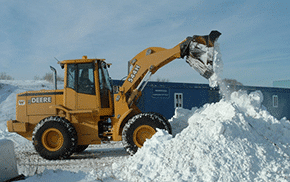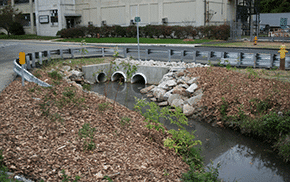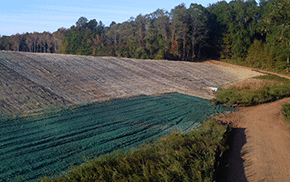Rain gardens, or bio-retention areas, are important factors in keeping fertilizers, pesticides, and other pollutants from entering Connecticut’s local bodies of water. When implemented in a construction project, rain gardens are a low-impact development techniques that help meet the National Pollution Discharge Elimination System’s (NPDES Phase II) requirements.
Stormwater Management
The mechanism by which rain gardens work to remove pollution is relatively simple they are built in recessed areas on flat or gently sloping land; the runoff water collected from the worksite begins pooling in the recessed area instead of entering creeks and drains. Top layer elements such as gravel and mulch help the garden to evenly disperse the pooled water (and to reduce local soil erosion). Once the water has been dispersed across the mulch or gravel layer, the underlying soil and plants’s root systems will then work to soak up the excess water.
Filtering Pollutants
Now that the runoff water has been redistributed and begins seeping down into the soil and plant roots via the top layer, the filtration process begins. The soil in a rain garden is an important part of the pollution filtering process; soil should be a good mix of clay, sand and compost as these are the main elements that work to treat pollutants in runoff water. Because lawns and gardens attract heavy foot traffic, it’s important that the soil used in rain gardens not be so compact that the water is not absorbed effectively. The plants selected for a rain garden are important as they both remove the excess water from the soil through evapotranspiration (the evaporation and movement of water through plants) and remove extra nutrients through ecological recycling (the cycle of organic/inorganic matter into living matter). The plants selected need to have healthy root systems; native species are a good choice for local rain gardens as they are hearty and have well-developed roots.
A Typical Home Rain Garden
These attractive gardens are an environmentally friendly landscape feature that developers, city planners and homeowners want to incorporate in their plans. Typically the first defense in protecting local bodies of water and wetlands from polluted stormwater runoff, rain gardens are key to effective stormwater management.
Key Takeaway
Rain gardens are good for the environment. They are low-impact landscape features that help reduce the level of chemical pollution in our nearby bodies of water. Further, rain gardens prevent local flooding and lawn damage. The various shrubs, grasses and trees that are planted in a rain garden attract wildlife and provide shelter for them. An added bonus for property owners is that rain gardens often attract insects and birds, reducing the amount of nearby mosquitoes. All Seasons Landscaping in Newington, CT, is experienced in installing attractive and efficient rain gardens. We routinely use native Connecticut plants in our work and take the issue of invasive species removal and control seriously. If you need landscaping contractors with expertise in rain garden installation, look no further than Newington\’92s All Seasons Landscaping.


















